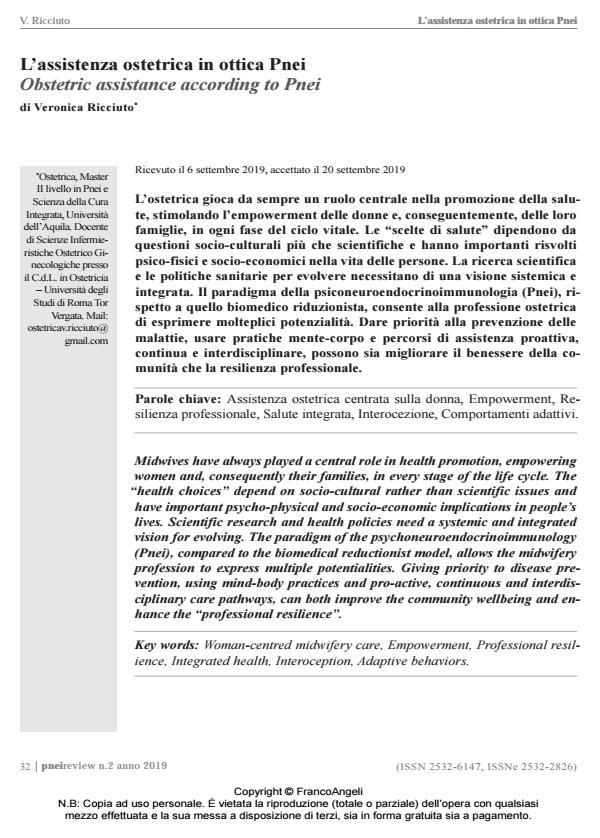Obstetric assistance according to Pnei
Journal title PNEI REVIEW
Author/s Veronica Ricciuto
Publishing Year 2019 Issue 2019/2
Language Italian Pages 11 P. 32-42 File size 129 KB
DOI 10.3280/PNEI2019-002004
DOI is like a bar code for intellectual property: to have more infomation
click here
Below, you can see the article first page
If you want to buy this article in PDF format, you can do it, following the instructions to buy download credits

FrancoAngeli is member of Publishers International Linking Association, Inc (PILA), a not-for-profit association which run the CrossRef service enabling links to and from online scholarly content.
Midwives have always played a central role in health promotion, empowering women and, consequently their families, in every stage of the life cycle. The "health choices" depend on socio-cultural rather than scientific issues and have important psycho-physical and socio-economic implications in people’s lives. Scientific research and health policies need a systemic and integrated vision for evolving. The paradigm of the psychoneuroendocrinoimmunology (Pnei), compared to the biomedical reductionist model, allows the midwifery profession to express multiple potentialities. Giving priority to disease prevention, using mind-body practices and pro-active, continuous and interdisciplinary care pathways, can both improve the community wellbeing and enhance the "professional resilience".
Keywords: Woman-centred midwifery care, Empowerment, Professional resilience, Integrated health, Interoception, Adaptive behaviors.
Veronica Ricciuto, L’assistenza ostetrica in ottica Pnei in "PNEI REVIEW" 2/2019, pp 32-42, DOI: 10.3280/PNEI2019-002004